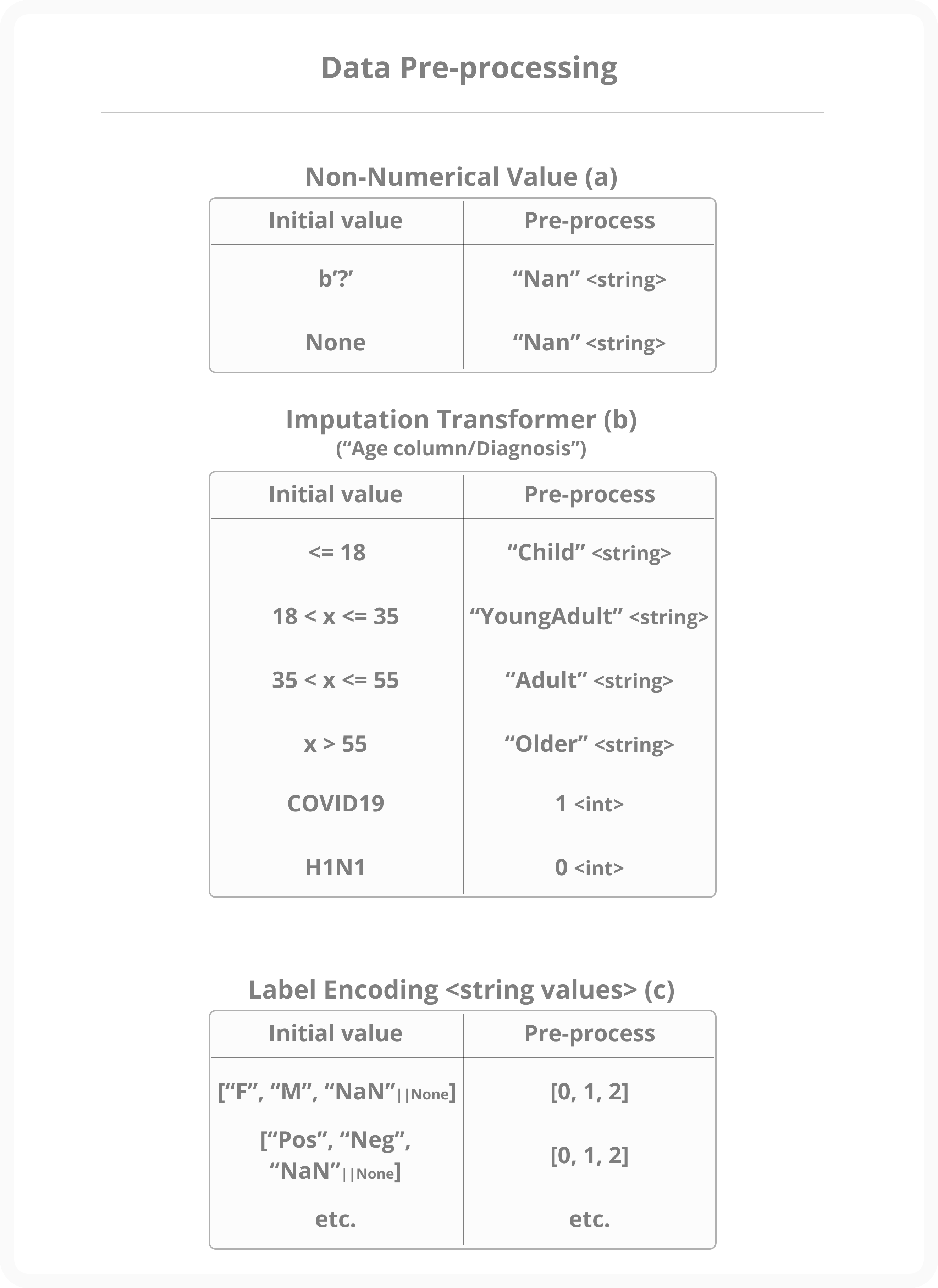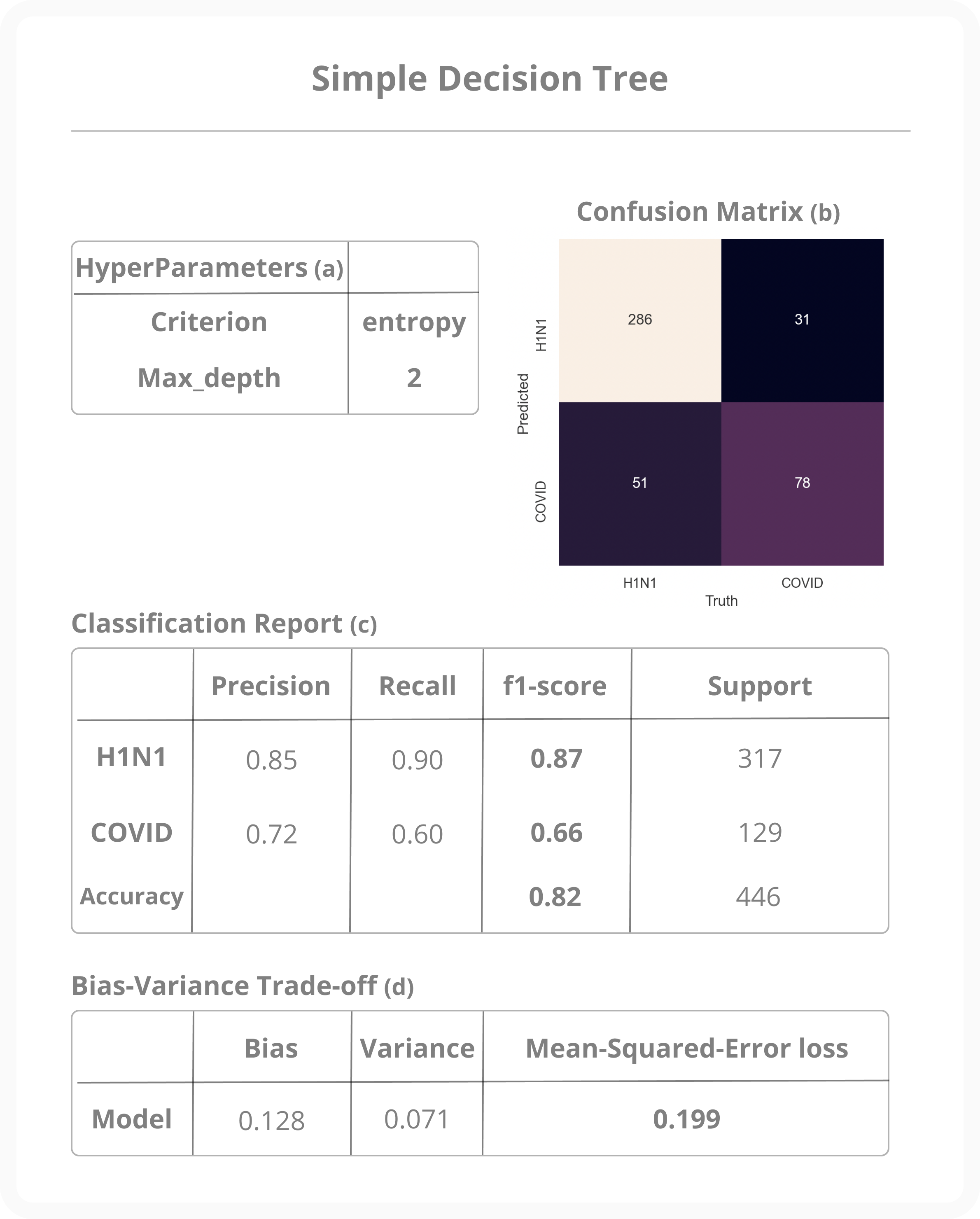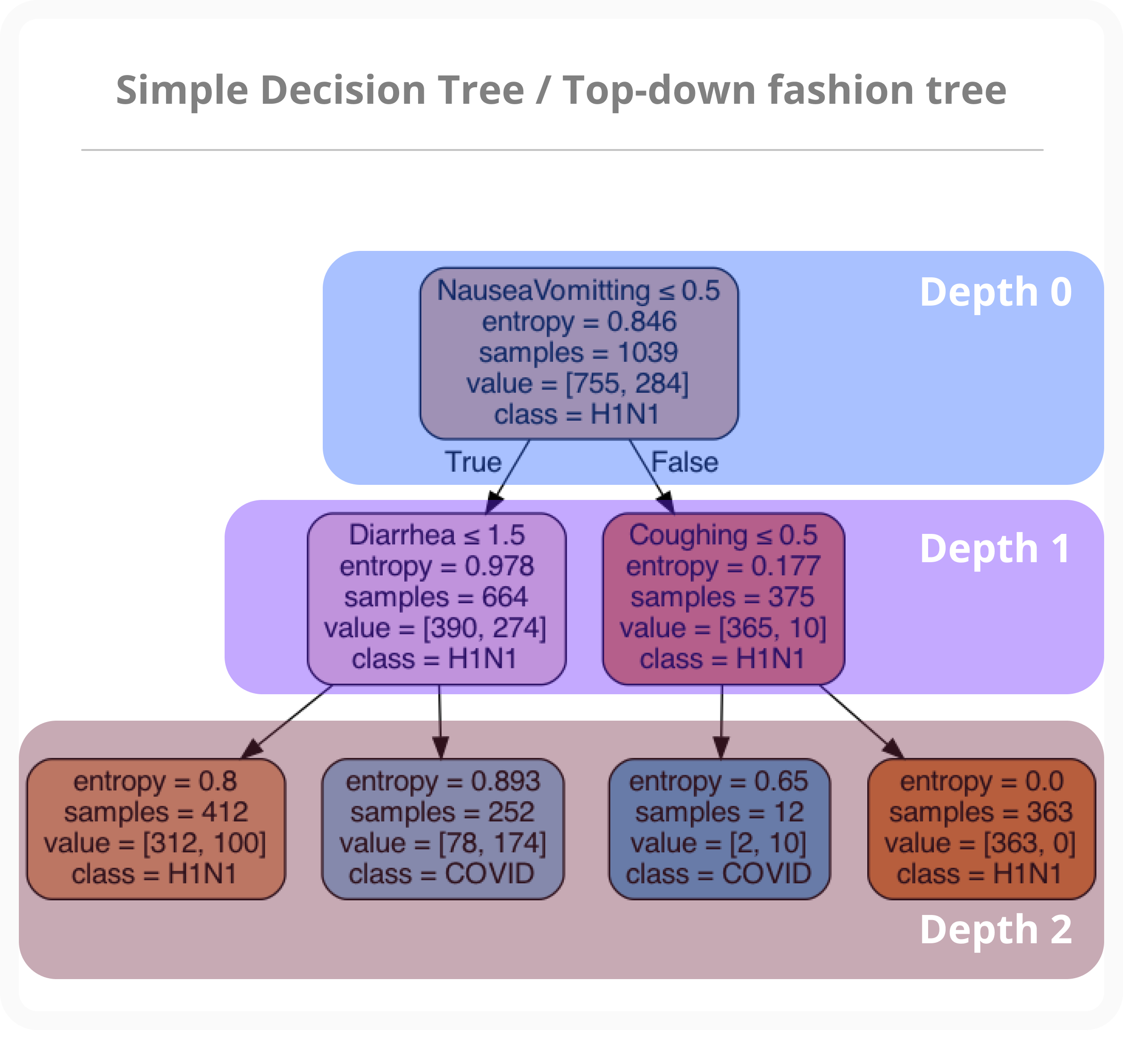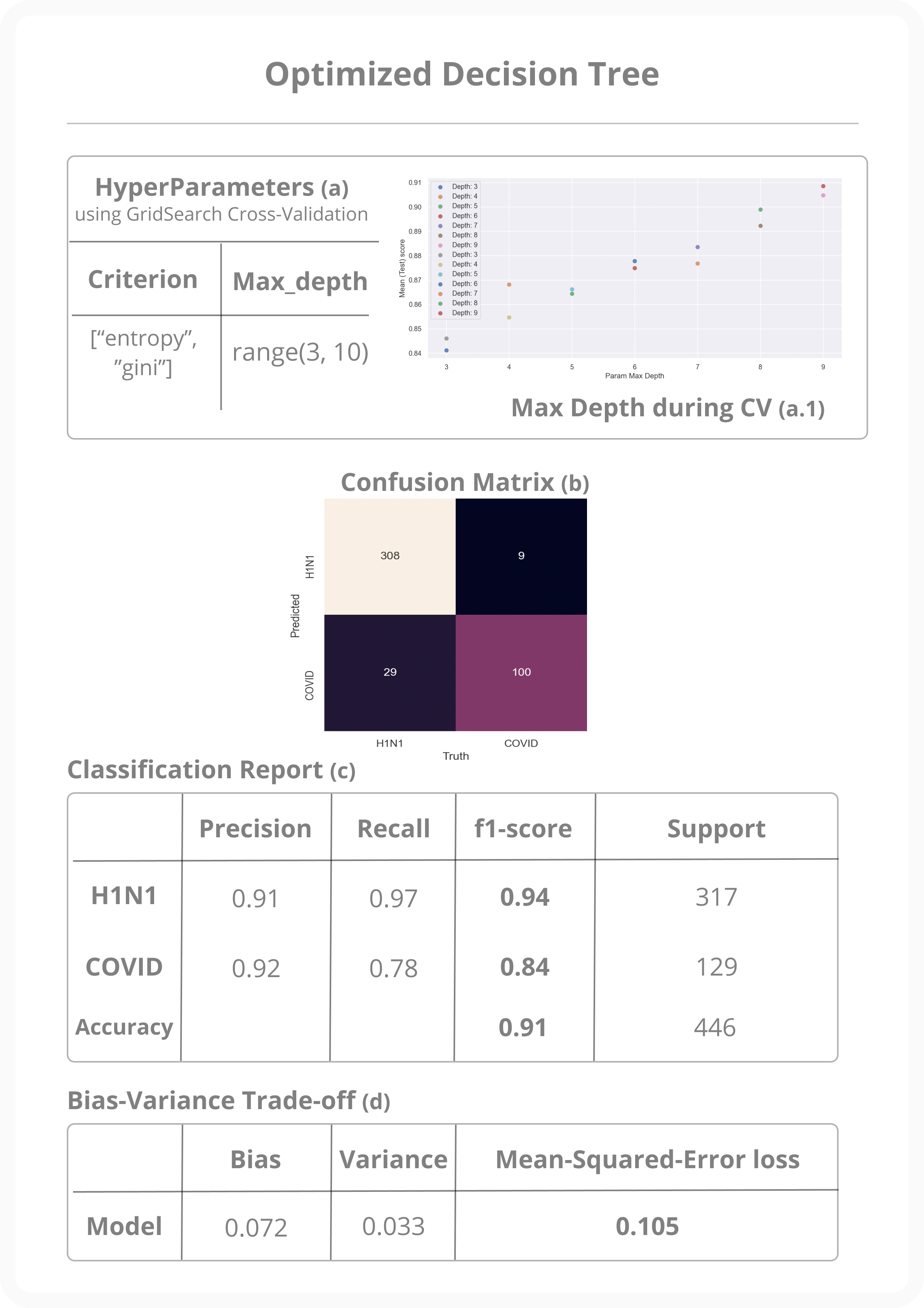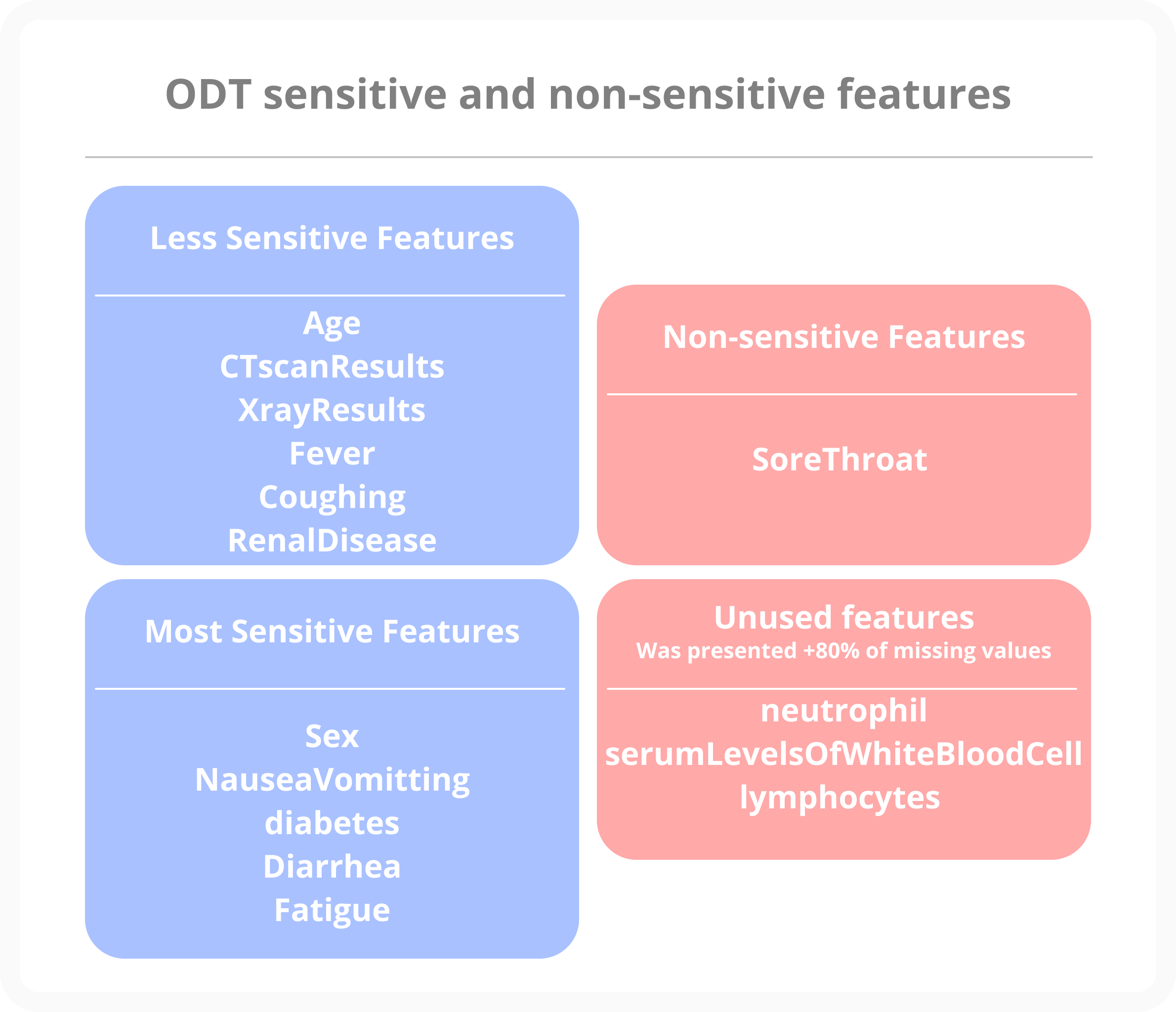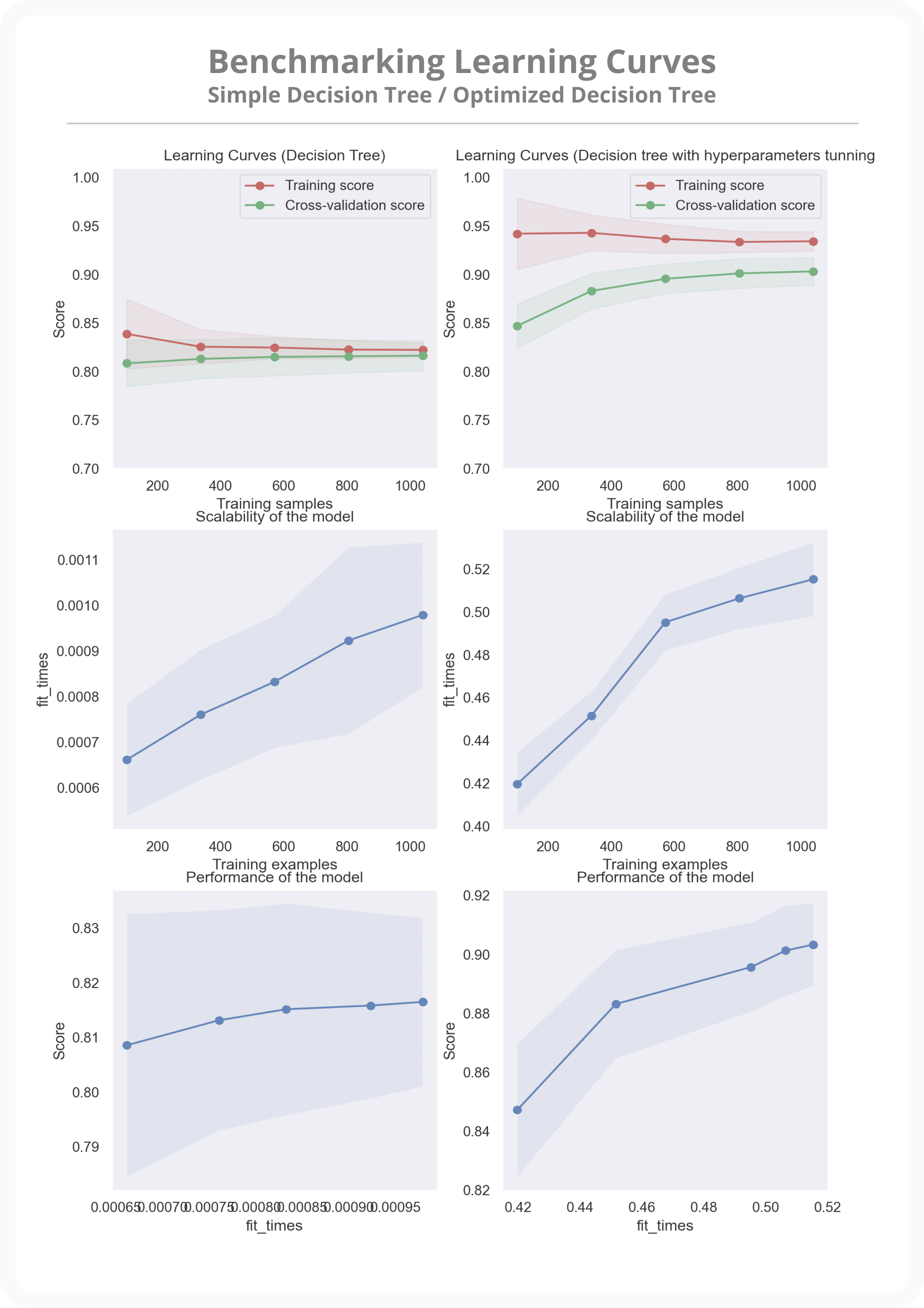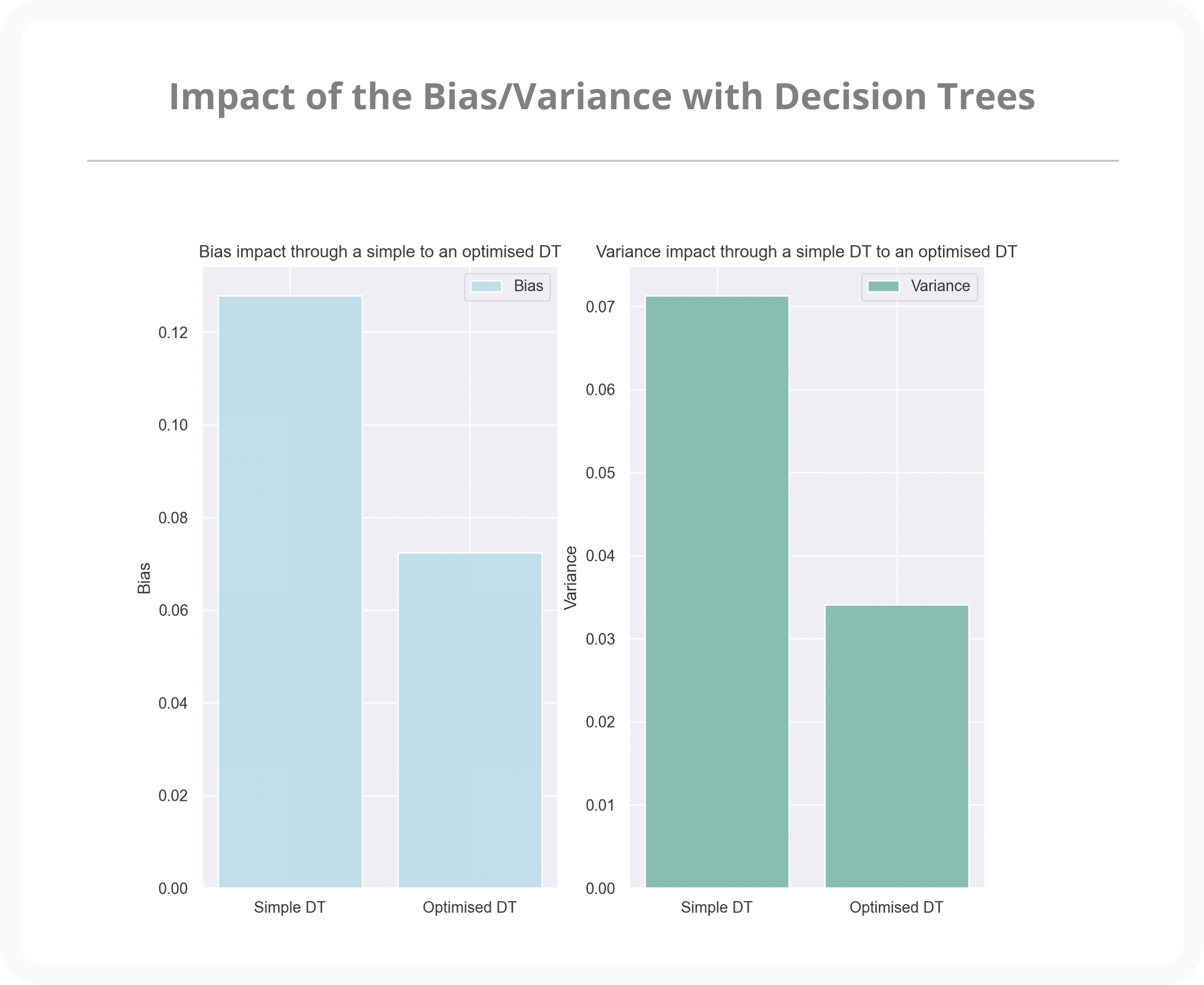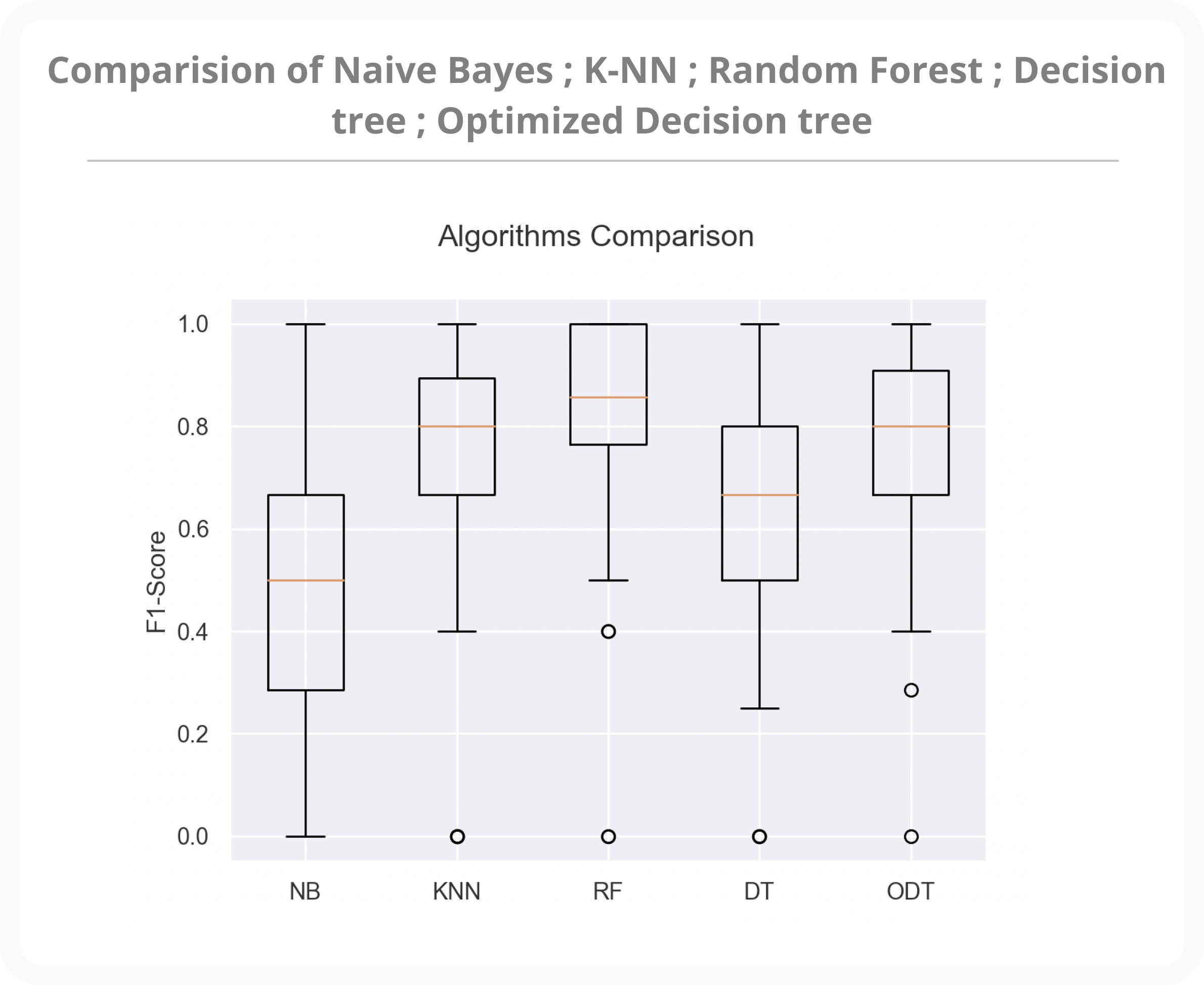The goal of this project is to demonstrate an implementation of an optimised decision tree capable of classifying the data fed to it with ~90% accuracy using Python and the Scikit Learn as Machine Learning Library. More information can be found in the sections that follow.
Marek Grzes graded my work with a: 90/100 % --> top 5% best of the class.
First and foremost, ensure that all the required packages are installed (see requirement.txt), otherwise, use the script
packages-required-install.sh to have them installed in your Python packages env.
python(3) main.py(It reads thedata.csvfile at the project's root automatically).
The project is fully commented and accessible through a pre-compiled version at the project's root folder named: /pre-compiled-documentation.
Make sure you have the python package pdoc installed before regenerating the documentation.
./documentation.shand see the output.
The project is open and free to use, however, feel free to add some scenarios to the main file main.py and submit a
pull-request. I would be happy to make that short study of the data more flourished with your ML experience.
The data are provided from the recent research article of Li, W.T _et.al_ [1] on `Using machine learning of clinical data to diagnose COVID-19: a systematic review and meta-analysis`.
[1].Li, W.T., Ma, J., Shende, N., Castaneda, G., Chakladar, J., Tsai, J.C., Apostol, L., Honda, C.O., Xu, J., Wong, L.M. and Zhang, T., 2020. Using machine learning of clinical data to diagnose COVID-19: a systematic review and meta-analysis. BMC medical informatics and decision making, 20(1), pp.1-13.
The dataset provided was also derived from previously published works on the internet, and it contained a significant number of missing values or categorical features. For the well-processing of the classifiers shown below (Fig: 1), the Label encoding and Hand-impute methods were used.
Fig: 1 - Pre-processing of the data.To begin, a first decision tree was created in order to observe the behaviour of its output in relation to the data that was fed into it. The outcome was disappointing because the tree's depth was too shallow, implying that the model is not even slightly correlated with the training data. All the classifier's parameters, as well as the outcome metrics (Conf. Matrix, Classifier reports, and so on), are shown below (Fig: 2). The representation of the output tree is shown below (Fig: 3).
Fig: 2 - Simple decision tree outcomes Fig: 3 - Simple decision tree representation.After the poor results shown above, a more in-depth analysis of the hyperparameters has been performed using a K-cross-validation method. Having the highest score, on the other hand, increases the risk of getting an over-fitted model. To avoid a model that is overly correlated with the training dataset, hyperparameter range has been intentionally hand-decreased (range(x, 21) -> range(x, 10)), illustrated in (Fig: 4). The exhibit model is effective while also being easily interpretable: _best depth found was 9 with gini for the impurity method. There is less miss-classification and showed strong results with the harmonic mean of precision/recall (Fig: 4). Finally, the sensitive features observed are shown below (Fig: 5).
The tree representation is available here.
Fig: 4 - Optimised decision tree outcomes with hyper parameters tuning using Cross-validation. Fig: 5 - Optimised decision tree sensitive features.Regarding the Scikit Learn Classification report or the confusion matrix available above, it was difficult to determine which model had a better fit of the data (i.e.:not under/over but good fit). The figure below describes how good the model is with the training and cross-validated datasets in the first row. The simple decision tree appears to be very close with both curves but has a low accuracy, whereas the optimised decision tree on the right has a slight over fit but a high accuracy, which is not too bad in the current context because it can be applied to unseen data and still recovers good prediction. The missing values in the data appear to be the source of the overfitting in this case. The two last rows are about the performance regarding the time of the training etc which presents a huge gap between the simple DT and the optimised DT with cross-validation. (Fig: 6). On the other hand, the bias and variance of each model presents a huge gap after having performing cross-validation for hyper parameters tuning. (Fig: 7).
Fig: 6 - Simple/Optimised DT learning curves Fig: 7 - Impact bias variance trade off from the Simple to the Optimised decision treeOther classifiers are available throughout the Scikit Learn library, and there are likely other ways to manage that data as well. Following the completion of the preceding experiments, a final one on the comparison of several classifiers was carried out. According to the findings, the Random Forest classifier is extremely powerful, but it is clearly less interpretable than a simple decision tree with hyper parameters tuning (using cross-validation). Personally, I would use the optimised decision tree because of its interpretability and high accuracy. Results are shown below (Fig: 8).
Fig: 8 - Simple/Optimised DT learning curvesSome subjects within the data are outliers, as one may have tested positive for one or another disease without mentioning any symptoms (only age and sex). Hence, more research on outliers could reduce the number of miss-classifications or better-fit the slightly over-fitted model.
